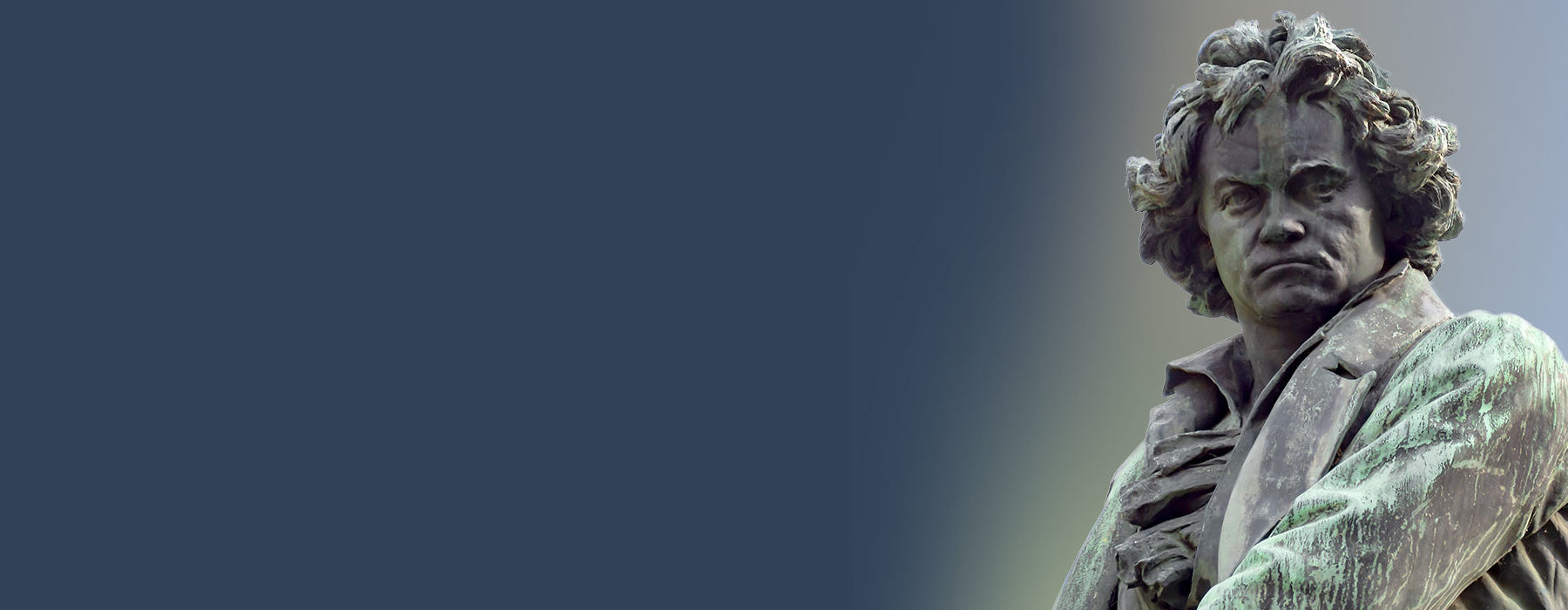Beethoven Symphonien in Baden-Baden
29. Juni - 11. Juli 2021

The Beethoven Project
Sie treffen mehr Informationen zu diesem Projekt hierunter auf Englisch.
We are looking forward to performing a Beethoven Symphony cycle at the Festspielhaus in Baden Baden with Yannick Nézet-Séguin at the start of July. Originally this important project had been planned for April 2020 with our partners at the Paris and Luxemburg Philharmonies in celebration on Beethoven’s 250th birthday but unfortunately it was cancelled due to the outbreak of the pandemic. It has been a huge effort to bring this project back to life, and indeed to change already agreed plans for this summer, and we are very grateful to the Festspielhaus in Baden Baden and to all the artists concerned for their support. All four concerts will be streamed and recorded live for later release on Deutsche Grammophon.
Beethoven’s symphonic repertoire has been at the very heart of the COE since its foundation 40 years ago and it is with great excitement and anticipation that we look forward to rediscovering, performing and recording these extraordinary works with our great friend and Honorary Member, Yannick. It was 30 years ago that we performed and recorded our first Beethoven symphony cycle with our very first Honorary Member, Nikolaus Harnoncourt, a recording which went on to win every major recording award and which sold over one million CD box sets.

Partnership with B&H
Our performances of Beethoven’s symphonies in Baden-Baden are the first complete cycles using the “New Beethoven Complete Edition” by Breitkopf & Härtel with music delivered to Luxembourg “hot off the press”. The edition has been launched in the meantime but we are proud to highlight our support and look forward finally to having the chance to discover its secrets. Nick Pfefferkorn (CEO of Breitkopf & Härtel) says “Especially in Symphony No. 9 one can literally hear and experience the difference, as Beethoven’s original and recently re-discovered Double Bassoon part is used for the very first time.”
Yannick Nézet-Séguin on the new Breitkopf edition of the Beethoven Symphonies

The COE and Yannick
Performing and recording all of Beethoven symphonies with Yannick Nézet-Séguin is a particularly special project to us, not only because Beethoven has been at the very heart of the COE since its foundation in 1981, but also because Yannick is such a great friend of the Orchestra. Since our first tour together back in 2008, we have embarked on many exciting musical adventures and released a large number of recordings, all with Deutsche Grammophon:
- Two symphony cycles: Schumann in 2014 and Mendelssohn in 2017
- Five Mozart operas: Cosi fan tutte in 2013, Die Entführung aus dem Serail in 2015, The Marriage of Figaro in 2016, La Clemenza di Tito in 2017 and The Magic Flute in 2019
- Visions of Prokofiev featuring violinist Lisa Batiashvili in 2018
- Mozart’s Piano Concerto No. 20 with pianist Seong Jin Cho in 2019
These recordings are all available to listen to on Idagio, partner of the Chamber Orchestra of Europe and the world’s first classical music streaming platform, and you can access them by clicking on the links above.
Images speak better than words and the short film below portrays the very special relationship between Yannick and the COE.
Yannick Nézet-Séguin and the COE
The COE and Yannick
Memories of the recording of the Beethoven Symphonies with Nikolaus Harnoncourt (1991)
The Beethoven recordings of the Chamber Orchestra of Europe in 1991 under Nikolaus Harnoncourt represented then the culmination of what can now be seen as the beginning of a long-standing artistic collaboration and friendship.
Indeed, the first encounter ever of these two forces was a pure Beethoven project – something which, in retrospect, seems so obvious and natural.
The first rehearsals in October 1986 took place in a musty recording studio in the bowels of the Wiener Konzerthaus. This musical “blind date” was arranged by an adventurous (visionary?) impresario and subtly nudged along by a handful of COE members who had contact with Nikolaus Harnoncourt through other ensembles.
At the time no one could have foreseen the outcome of this venture. Beethoven’s Sixth and Eighth Symphonies, both pieces the COE had performed extensively, were the first to be rehearsed and the impressions of those earliest rehearsals remain strongly implanted in our minds.
Nikolaus Harnoncourt’s strong musical-historical perspective, combined with his extraordinary imagination and his ability to effectively communicate and synthesise them both, quite naturally matched the COE’s desire for “answers” and its ability to transfer – usually very quickly – complex concepts into the orchestral context. We quickly and readily grasped the ides and techniques of a rhetorical approach to music-making. The similarities and differences of modern orchestral instrumentarium and that of our 18th- and 19th-century counterparts were also consciously and critically reconsidered in regards to developing a playing style (our use of historically-oriented brass and timpani being the most obvious aspect of this). The results were often instantaneous. The “Pastoral” Symphony with its clear programme was perhaps the most eye-opening example. The Scene at the Brook or the Thunderstorm for example, were alive with flow and power of “nature” as we had collectively never experienced it in this music before. A “journey” through the antique church modes over cantus firmus style motives in the last movement of the Eighth Symphony – a piece we thought we knew well – had more than a few of us thinking “… is he making this up?” He was not.
The monumental Fifth Symphony ended our first set of concerts. Playing this piece for the first time, the Orchestra was possessed by the music and the new musical language it was learning. So possessed was it, in fact, that still today many cannot remember how the concert actually was. One certain memory is that, after the final chord there was only silence followed by a loud groan from a member of the audience and then a spattering of applause which slowly grew.
Dane Roberts
COE Double-Bass